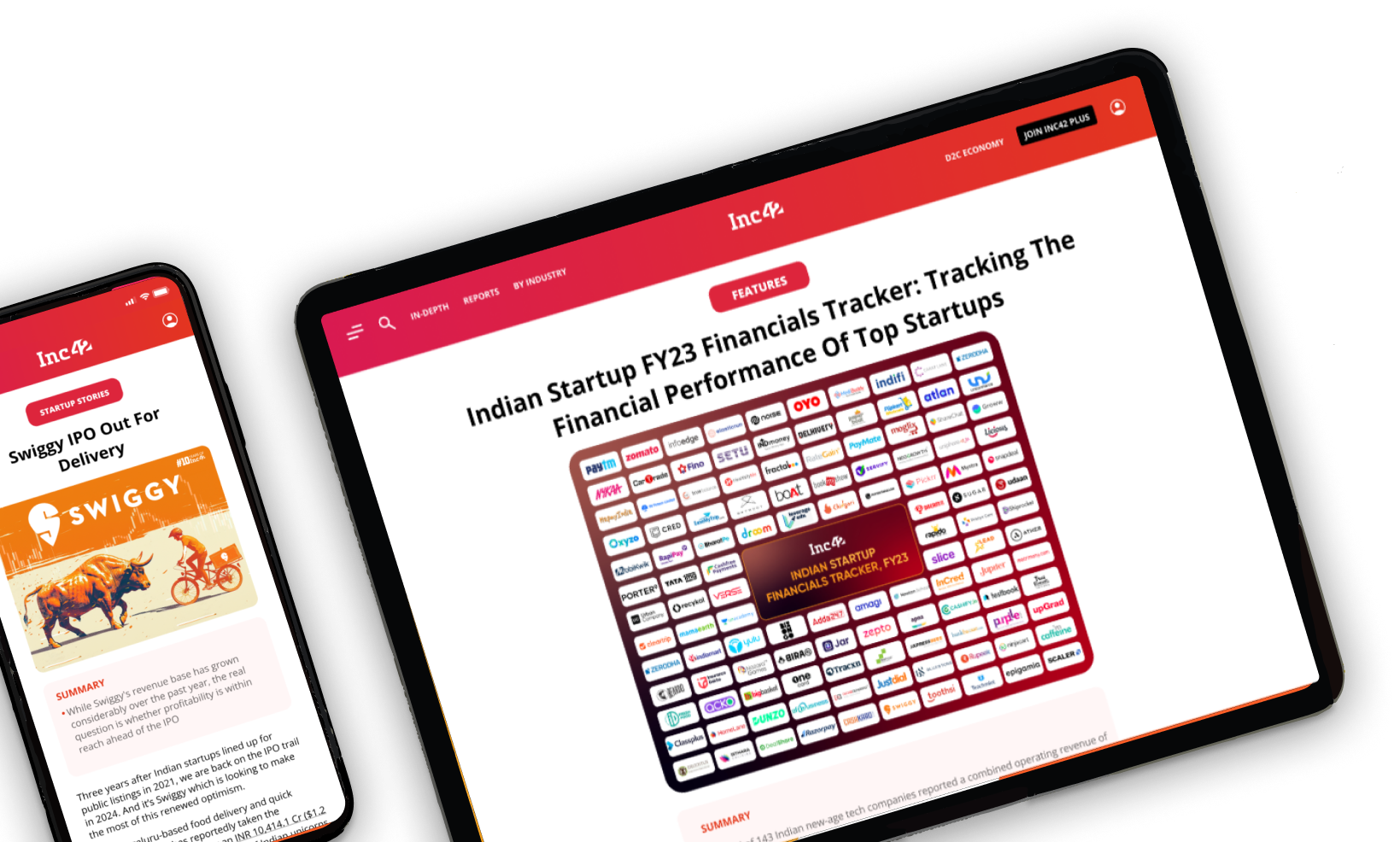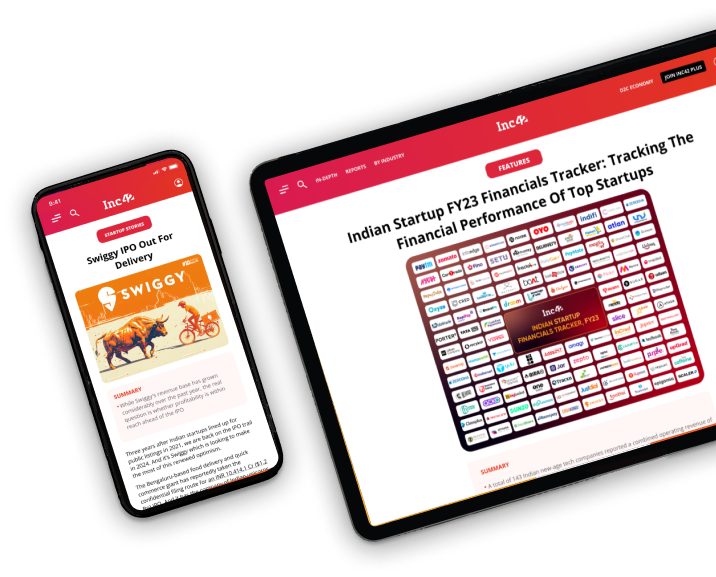According to an EY study, the percentage of regional languages in OTT-based video content will double from 27% in 2020 to 54% by 2024
STAGE offers short-form, hyperlocal entertainment content in Haryanvi and Rajasthani
The platform features close to 40 shows and more than 200 active artistes from Haryana and Rajasthan. It claims to have clocked INR 3.8 Cr in revenue in FY22
When three engineering students created a content aggregation platform to tell stories and build a community of storytellers, little did they know that it would go on to compete with the likes of BuzzFeed and ScoopWhoop (acquired by Good Glamm Group). In 2014, brothers Parveen and Vinay Singhal and their batchmate Shashank Vaishnav started WittyFeed as a Facebook page. Soon enough, it went viral.
At its peak, WittyFeed was clocking INR 40 Cr in annual revenue. Most of its revenue came from advertisements displayed on the viral content, claimed Vinay. But in 2018, Facebook deleted the page overnight. “Even today we have no idea what exactly went wrong. Facebook simply communicated to us that some of our partner influencers had done something against its guidelines,” Vinay told Inc42.
As the platform relied heavily on Facebook for generating website traffic, sustaining without the social media’s support was not viable in the long run.
The trio did not give up, though, as the proverbial entrepreneurial bug had already bitten them. The question was how to capitalise on their strength of grabbing eyeballs with viral, sticky content.
To seek the solution, the Singhal brothers went back to their roots. They had grown up listening to the Indian ragas and the folk music of Haryana. Hence, they wanted to create a platform dedicated to the state’s rich cultural heritage that would resonate with the locals.
In 2019, the trio launched the OTT platform STAGE to realise their dream.
“We realised that most platforms were offering unsavoury content or featuring foreign shows dubbed in Indian languages or going for poorly localised versions of popular global shows. But that’s not what Bharatwasis (Indians) relate to,” said Vinay, cofounder and CEO of STAGE.
In contrast, STAGE offers dialect-based and hyperlocal short-form entertainment content in many formats such as short movies, stand-up specials, web series and stage shows of Indian classical music and performances of saang, a popular dance-theatre form.
The platform currently features close to 40 shows and more than 200 active artistes from Haryana and Rajasthan, including actors and performers like Yashpal Sharma, Sunil Chitkara, Sapna Chaudhary and more. Between April 2021 and June 2022, it claims to have grown its subscriber base to more than 115K. In FY22, STAGE earned INR 3.8 Cr in revenue and it is growing at an MoM of 12-15%, the CEO said.

The Great Pivot
The OTT concept is not new in India. In 2008, Reliance Entertainment launched the first Indian over-the-top platform called BIGFlix which allowed viewers to stream or download movies at any time. But content streaming exploded in the wake of the pandemic as the closure of movie theatres compelled stakeholders to leverage online distribution channels. According to a CII-BCG report, India recorded 70-80 Mn OTT subscribers at the end of 2021, up from 14 Mn in 2018.
Unlike the early OTT days, this space is no longer ruled by the privileged, English-speaking urban Indians. A report by the Boston Consulting Group says about 80% of OTT users in India are from Tier 2 and Tier 3 cities, as well as rural India.
To cater to this humungous viewership, OTT players are increasingly introducing original web series and streaming vernacular-language movies, adding the desi flavour to make online content more relatable to the homegrown audience.
However, STAGE claims to offer something better and beyond the domains of English and mainstream vernacular content.
“We aim to go beyond those and create content in dialects. This market is currently untouched by any major OTT player. So, we have the first-mover advantage,” said Vinay.
Nevertheless, the startup had to face major challenges three years ago when it began its journey. First of all, how could it prove there’s a demand for hyperlocal, dialect-based content? Second, why would anybody pay for it when free content is readily available on platforms like YouTube?
STAGE navigated these pain points with a well-thought-out strategy.
According to Vinay, the team took around a year and a half to understand market feasibility, meticulously monitoring app downloads and retention rate and taking regular feedback from users.
“When we saw we had a good retention rate, we decided to monetise the product,” he told Inc42.
In February 2021, the founders took a leap of faith and went from free to a fully-paid subscription model. Subscription starts with a quarterly plan for INR 199, while the annual plan costs INR 399. As of now, subscription sales account for the lion’s share of the revenue. STAGE claims 50% repeat customers and 8-10K monthly subscriptions.
 Keeping The Spotlight On All Things Local
Keeping The Spotlight On All Things Local
In the beginning, STAGE founders used their savings to mentor and onboard local Haryanvi artistes and opted for easy-to-create content formats (affordability mattered a lot in those days) like comedy specials and folk performances. But after introducing a paid-only content model, the platform has ventured into more creative genres like web shows and short films.
“We partner with local production houses and individual creators. We have a single POC (person of contact) for each project who is responsible for end-to-end content delivery. Everything, from ideation, concept finalisation and screenplay to budgeting, casting and marketing, is done by us,” said Vinay.
The tipping point came in December 2021 when the platform released its maiden web series, Safe House. It dealt with honour killing, often triggered by intercaste marriage, a deep-rooted problem of the Haryanvi society that many locals could relate to.
“Safe House fuelled STAGE’s growth and skyrocketed the number of subscriptions. App engagement and overall brand awareness also grew hugely,” said Vinay.
After the success of Safe House, the founders grew more confident and were ready for funding. In January 2022, they raised $2.5 Mn in Pre-Series A from a clutch of investors, including Blume Ventures and Better Capital. The round also saw participation from notable angel investor groups such as Investment Point Ventures (IPV) and The Chennai Angels (TCA), and YouTubers-turned-influencers Ranveer Allahabadia and Dhruv Rathee.
“I have been following their journey since their initial days at WittyFeed,” said Srinivasan B, TCA’s lead investor and managing director of the Vikatan Group. “We are confident that STAGE will become the next big OTT platform, and as early-stage investors, we will hugely benefit from the founders’ vision,” he added.
Speaking on the matter, Vinay said, “Our investors at TCA are always available. And we regularly hold review meetings with them to discuss the direction of the company. They mentor and educate us on several fronts.”
Post the funding, the OTT startup has come out with more projects, according to the CEO. In May 2022, STAGE launched the Rajasthani version of its website and app, and it is now aiming to replicate the model in three more dialects in the next 18-24 months.
Will Indian OTT Get The Non-Hindi Vernacular Boost?
Until now, major OTT platforms have only touched the outer layer of language diversity, offering content predominantly in Hindi. But this is changing rapidly. According to an EY study, the percentage of regional languages in OTT-based video content will double from 27% in 2020 to 54% by 2024, and domestic players are taking note of this trend. For instance, in April this year, ZEE5 announced that 50% of its overall viewership came from regional languages. For Disney+ Hotstar, regional content accounts for more than 40% of the viewership.
India’s OTT market is currently the fastest-growing in the world. It is set to reach $2.1 Bn by 2024 and emerge as the sixth-largest market globally. This is hardly surprising as India is a multilingual country, home to more than 19K languages or dialects, leaving this sector wide open for local language players.
Many vernacular OTT platforms have already understood this market truth and forayed into the space, catering to the unique demand of specific regions. Platforms driving the vernacular OTT revolution include STAGE, Bengali OTT platform Hoichoi, OHO Gujarati, Malayalam streaming platform Koode and many more.
In the coming years, the growth of non-Hindi vernacular content is likely to drive the industry, and more companies are bound to jump on the bandwagon. It will be interesting to watch how the likes of STAGE, with their early-mover advantage, create a differentiation strategy to stay ahead in the race.
Update | 1 July 2022, 4 PM
The story has been updated to include STAGE’s latest traction numbers.




 Fintech
Fintech Travel Tech
Travel Tech Electric Vehicle
Electric Vehicle Health Tech
Health Tech Edtech
Edtech IT
IT Logistics
Logistics Retail
Retail Ecommerce
Ecommerce Startup Ecosystem
Startup Ecosystem Enterprise Tech
Enterprise Tech Clean Tech
Clean Tech Consumer Internet
Consumer Internet Agritech
Agritech

































 Ad-lite browsing experience
Ad-lite browsing experience